15 Most Endangered Animals in Africa (Stop Animal Extinction)

Thank you for caring. Below we'll go over the most endangered animals in Africa and how, if you are able to, you can help prevent their extinction.
Do you remember the last time you bought that gorgeous pair of stilettos made from genuine cheetah fur? Did you stop to think that you are contributing to the possible extinction of a species that is very important to the eco-system of its habitat?
Humans contribute to the possible extinction of a species through deforestation, displacement, and poaching.
What does endangered mean?
According to Dictionary.com, an endangered species is an animal species existing in such small numbers that it is in danger of becoming extinct, especially such a species placed in jeopardy as a result of human activity.
Related: These Are the 10 Largest Animals In Africa
Most endangered animals in Africa
Today many animals in Africa are being fast-tracked towards extinction and so have been identified as endangered species in order to protect them from animal predators and their biggest predators; humans. Let us look into the beautiful creatures whose existence we are threatening.
#1 - Northern White Rhino
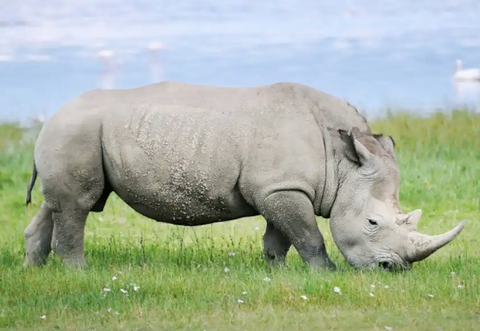
Status: Critically Endangered since 1996
Current Population: Only 5 left.
Northern white rhinos, also known as the square-lipped rhinoceros due to their square upper lip, are the second largest land mammal in the world.
Despite their size, they are frequently hunted for their horn which has led to their near extinction. Currently, there are three northern white rhinos in the world. Sudan, the only male, Najin, and Fatu live in the Ol Pejeta Conservancy in Kenya.
Their near extinction arose from the increased demand for horns to be used in traditional Asian and consumed by the upper-middle class citizens as a symbol of wealth in Vietnam.
#2 - Ethiopian Wolf
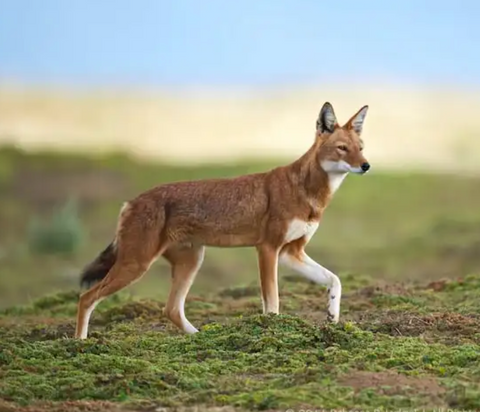
Status: Endangered since 2004
Current Population: About 500 of them are left in the wild.
The Ethiopian Wolf as the name suggests is endemic to Ethiopia. The Ethiopian wolf is distinguished by its tawny red fur with a white underbelly, a blaze on its chest and white fur on its throat that sweeps up and covers the underside of its muscle.
This species has seen a significant reduction in its population due to several factors, namely diseases in the Bale Mountains, rabies and subsistence farming in the Ethiopian highlands.
Foundations such as the Oxford University Ethiopian Wolf Conservation Program are working to halt their extinction by vaccinating the wolves and through community outreach.
#3 - Black Rhino
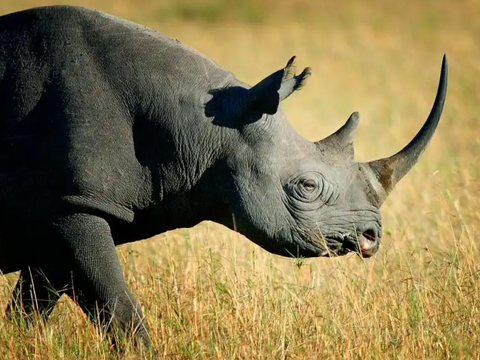
Status: Critically Endangered since 1996
Current Population: Around 3,500 according to the last count by IUCN.
Rhino Horns are in high demand. Here is another species of rhinoceros that is being poached for its horns. The Black rhino is native to eastern and southern Africa. Rhinos, one of the oldest groups of mammals.
In countries like Namibia, rhinos are an important source of income from ecotourism. The increase in poaching is again because of the high demand in Asia for its use in folk medicine. Organizations, like World Wild Life, are working to increase the black rhino population monitor and protect black rhinos.
#4 - Riverine Rabbit
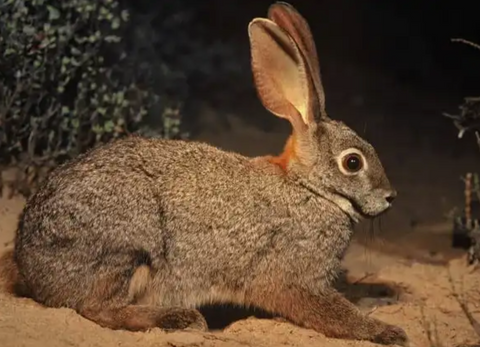
Status: Critically Endangered since 2003
Current Population: Less than 250 breeding pairs, and declining.
“You look like you will be able to make a good stew,’ says the farm worker as he uses a gin trap to catch the riverine rabbit. This rabbit is one of the most endangered terrestrial mammals in South Africa.
Their natural habitat is being destroyed with the removal of the natural vegetation along the rivers and streams which lead to a reduction in its population.
The rabbit can be identified by a distinctive black stripe that runs from the corner of the mouth over the cheeks and the white rings around the eyes.
#5 - Grevy's Zebra
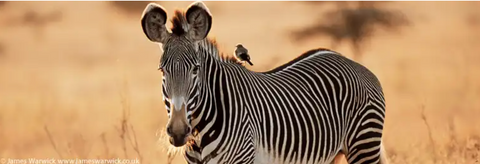
Status: Endangered since 1986
Current Population: Total wild population estimated at about 1,966 to 2,447.
Did you know that the Grevy’s zebra can run up to 40 miles per hour? The Grevy’s zebra, also known as the imperial zebra, is the most threatened of the three species of zebra.
Once upon a time, they inhabited the grasslands and savannas of Somalia, Ethiopia, Eritrea and Kenya in East Africa. However, because of illegal poaching and the destruction of their habitat, they are now only found in Southern Ethiopia and Northern Kenya.
#6 - Pickersgill’s Reed Frog
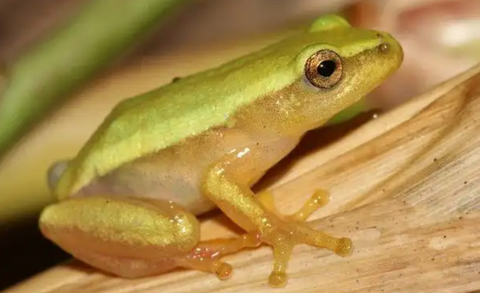
Status: Critically Endangered since 2010
Current Population: Yet to be recorded.
Are you a friend or foe? Pickersgills’s Reed Frog is a species of frogs endemic to South Africa where it lives in a small area of coastal wetlands. Adult females and some males are bright green in color with yellow and white stripes.
The Pickersgill’s Reed frog unwilling leaped its way to number 6 on this list because of the number of threats it faces. Urban development, the use of the insecticide DDT for mosquito control and drainage for agricultural purpose have eliminated large numbers of this species.
#7 - African Wild Dog
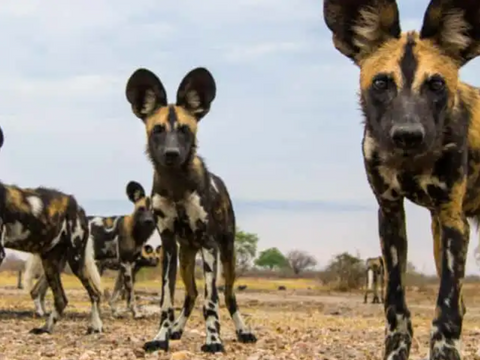
Status: Endangered since 1990
Current Population: Estimates place them at 3,000 to 5,500 in total.
Do you bark like my dogs do? The African wild dog, also known as African hunting dog, cape hunting dog, is a native of Sub-Saharan Africa. Unlike other dogs, which have five toes one their forefeet, the African wild dog has four toes on its forefeet.
This species is threatened by the destruction of their habitat through human activities and human-wildlife conflict and are susceptible to diseases spread by domestic animals. Oh and no they do not bark, instead, they communicate by touch, action, and vocalizations.
#8 - Mountain Gorilla
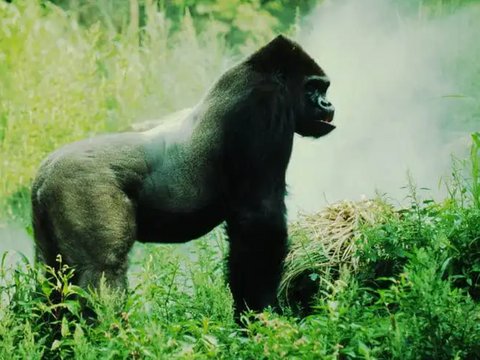
Status: Critically Endangered since 1996
Current Population: Around 880 of these great apes remain in the wild.
The mountain gorilla population is split in two with more than half of the population living in the Virunga Mountains that border the Democratic Republic of Congo, Rwanda and Uganda and the remaining found in the Bwindi Impenetrable National Park in Uganda.
They have very thick fur which helps them to survive in habitats with low temperatures. Their thick furs also make them a target of poachers. Their numbers have declined steeply due to hunters, habitat destruction and diseases.
#9 - Rothschild's Giraffe
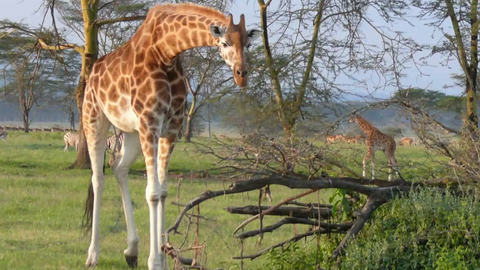
Status: Endangered since 2010
Current Population: Fewer than 670 remain in the wild.
How much longer taller can your neck grow? A giraffe's neck can be an astonishing 20 feet in height. The Rothschild’s giraffe also known as the Baringo giraffe got its name from the Tring Museum’s founder, Walter Rothschild.
The Rothschild’s giraffe is distinguishable from other types of giraffe by the five ossicones on its head whereas other species have two.
Isolated populations can be found roaming the savannahs, grasslands and open woodlands of Uganda’s and Kenya’s National Parks. Rothschild’s giraffes are threatened by predators such as humans, hyenas, lions, crocodiles, and leopards.
#10 - Chimpanzee
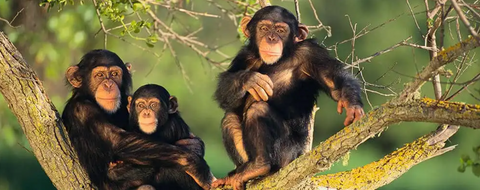
Status: Endangered since 1996
Current Population: Around 150,000 are left in the wild.
Regionally Extinct: Gambia, Benin, Burkina Faso, and Togo.
Are you as smart as a chimpanzee? Chimpanzees are found in the Congo jungle. Chimps diet consists mostly of fruits and plants with insects, eggs, and meat making up a small portion.
Chimps have the ability to communicate using facial expressions, sounds, and gestures.
Research conducted by scientists show that 95%-98% of humans and chimps DNA are similar. Even though chimps and chimps are considered as the closest species to humans they are still being hunted by humans.
Chimpanzees have become endangered due to poaching, habitat destruction and the illegal pet trade.
#11 - African Penguin
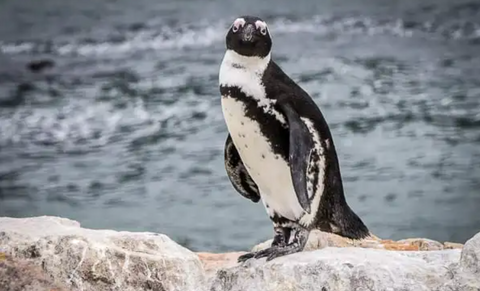
Status: Endangered since 2012
Current Population: Around 52,000 mature individuals remain in rapid decline.
Penguins? Africa? Yes!
The African penguins are the only penguins found on the African content. Their habitats are found in South Africa. They are also known as jackass penguins due to their loud, braying calls.
The over-harvesting of their eggs for food and guano for fertilizer are two reasons for their endangered status. More recently, the population has reduced significantly due to over-fishing and oil spills.
They are also preyed upon by sharks and Cape fur seal whom they have to also compete with for food and breeding sites. All of the breeding areas of the African Penguin are protected as National Parks or Nature Reserves and the collection of eggs or guano is no longer permitted.
#12 - African Elephant
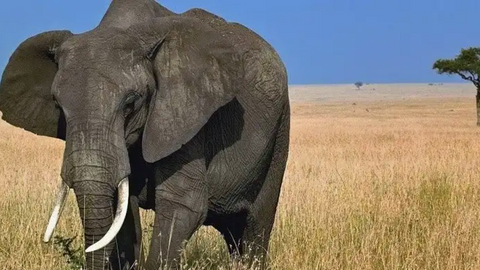
Status: Endangered since 1978
Current Population: Estimated at around 600,000 left in the wild.
In rapid decline caused by poaching. Hey Mr. Elephant, you sure do take up a lot of space. African elephants are the world largest land animals.
They are characterized by large trunks, used for communication and handling objects, mammoth-sized incisors called tusks that are used in fights and for marking, feeding and digging, and large ears which allow them to radiate heat.
African elephants made the endangered list because, despite a ban being placed on the international trade in ivory, they are still poached for their tusks which are made from ivory, meat, and skin. African elephant numbers are also negatively affected by habitat loss and degradation and human-wildlife conflicts.
#13 - African Lion
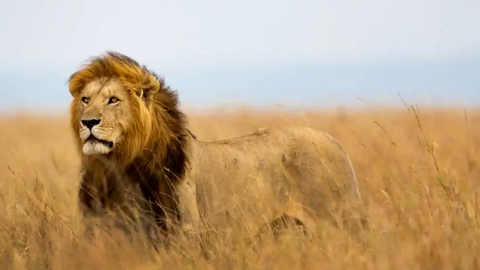
Status: Endangered since 2015
Current Population: Estimated at around 22,000 left in the wild.
Who is the king of the jungle? Lions, said to be the king of the jungle, were found throughout Africa, Asia and parts of Europe, now they are only found in parts of Sub-Saharan Africa and in a small population in Asia, specifically India’s Gir Forest. Lions are the only cats that live in groups called prides.
Each year their numbers continue to decrease as a result of habitat destruction, human-wildlife conflicts and trophy hunting.
#14 - Cheetah
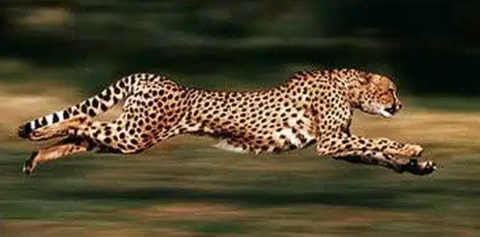
Status: Endangered since 2008
Current Population: Estimated at around 14,000 left in the wild.
Dear Cheetah, how did they catch you to put you on this list? Despite its speed, the cheetah population has seen a significant reduction in recent years. The cheetah is mainly hunted for its tan coat covered in solid black spots.
Cheetahs could be once found throughout Africa and Asia but being illegal hunted has significantly reduced their population Now they can only found in small numbers in parts of eastern, central and south-western Africa and a small portion of Asia. Cheetahs do not roar but purr like domestic cats.
#15 - Addax
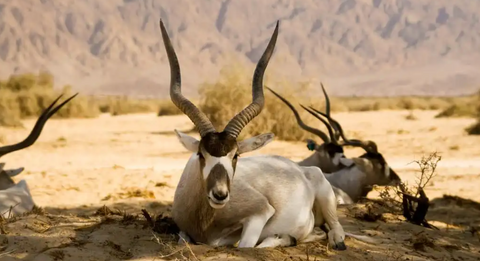
Status: Endangered since 1986
Current Population: Estimated at just over 200 left in the wild.
Addax, also known as the white antelope, lives in the Sahara desert. An interesting fact about the white antelope is that the color of its coat depends on the season.
In the winter, it is greyish brown with white hindquarters and legs; in the summer, the coat turns almost white or sandy blonde. As they are very slow they are extremely vulnerable to predators.
Addax have become endangered because they are hunted for their leather and meat. Their habitats have been destroyed by human settlement and agriculture and many die as result of chronic droughts in the desert.
To increase their numbers they have been placed in captive, breeding programs in reserves all over the world.
How You Can Help
Many organizations such as the:- Wildlife Conservation Society
- Gorilla Doctors
- Wildlife Alliance
- and the African Wildlife Association
. . . are working feverishly to protect wildlife and to increase the population of endangered species.
By conducting community outreach programs to educate residents living near habitats, vaccinating animals against deadly diseases, and advocating for governments to place bans on illegal trading activities.
You too can help to protect endangered species by practicing reforestation, inhibiting the use of pesticides and herbicides, and refusing to purchase products made from species near extinction.
Keep reading: 10 Mysterious Monsters of Africa

